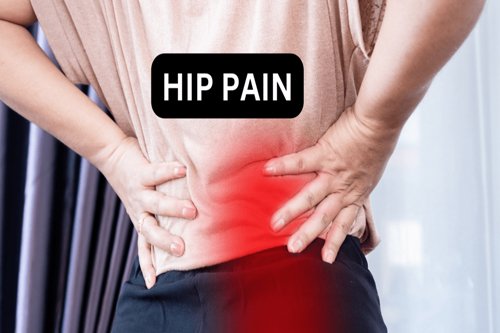Meet Our Doctor
Dr. Vrushabh Kumbhare
Orthopedic and Joint Replacement Surgeon
Educational details:
- M.B.B.S. (4.5 years +1 year Internship): August 2009 - April 2015 N K P Salve institute of medical sciences and research centre, Digdoh hills, Nagpur, Maharashtra (Under Maharashtra University of Health Sciences, Nashik)
- M.S. Orthopedics(3 years): May 2017- August 2020 Jawaharlal Nehru Medical Collage, Sawangi (Meghe) (Under Datta Meghe Institute of Medical Sciences Deemed to be University)
Experience:
- Senior resident: (September 2019 – May 2021) Department of Orthopaedics, Jawaharlal Nehru Medical Collage, Sawangi (Meghe)


Dr. Vrushabh Kumbhare
Orthopedic and Joint Replacement Surgeon
Hip Pain Treatment In Nagpur
Hip pain treatment can vary depending on the underlying cause of the pain. It’s important to consult with a healthcare professional for an accurate diagnosis and appropriate treatment plan. Hip pain refers to discomfort or pain in and around the hip joint, which is the joint where the thigh bone (femur) meets the pelvis.
The hip joint is a ball-and-socket joint that allows for a wide range of motion, and it is surrounded by muscles, tendons, ligaments, and other soft tissues.They can perform a physical examination, order imaging tests, and consider your medical history to help diagnose the underlying cause of the pain. Treatment options will depend on the specific cause and may include medications, physical therapy, lifestyle modifications, or, in some cases, surgical intervention. Feel free to visit our clinic and schedule an appointment.

Causes of Hip Pain
Arthritis: Thus, Osteoarthritis and rheumatoid arthritis are common conditions that can cause hip pain.Once, Osteoarthritis involves the gradual wear and tear of the joint cartilage, while rheumatoid arthritis is an autoimmune condition that affects the lining of the joints.
Hip Fractures: Fractures or breaks in the bones of the hip, particularly in the femur or pelvic bones, can lead to significant pain and mobility issues.
Bursitis: Inflammation of the bursae, small fluid-filled sacs that cushion the hip joint, can result in pain. Trochanteric bursitis and iliopsoas bursitis are two common types.
Tendonitis: Inflammation of the tendons around the hip joint, such as the iliotibial band or the tendons of the hip flexors, can cause pain.
Muscle Strains: Firstly, Overuse or injury to the muscles supporting the hip joint can lead to strains and pain.
Hip Labral Tears: The labrum is a cartilage ring that surrounds the hip socket. Tears or damage to the labrum can cause hip pain.
Hip Impingement: Also known as femoroacetabular impingement (FAI), this condition occurs when there is abnormal contact between the hip bones, leading to pain and reduced range of motion.
Sciatica: Thus, Compression or irritation of the sciatic nerve, which runs from the lower back down to the legs, can cause pain that radiates to the hip.
Treatment of Hip Pain
Rest and Activity Modification:
- Once, Avoid activities that worsen the pain.
- Thus, Rest can help reduce inflammation and allow the hip to heal.
Ice and Heat Therapy:
- Firstly, Applying ice packs or warm compresses can help alleviate pain and reduce inflammation.
Over-the-Counter Pain Medications:
- Thus, Nonsteroidal anti-inflammatory drugs (NSAIDs), such as ibuprofen or naproxen, can help manage pain and reduce inflammation.
Physical Therapy:
- Once, A physical therapist can design exercises to strengthen the muscles around the hip, improve flexibility, and enhance overall joint function.
Assistive Devices:
- Thus, Using walking aids, such as crutches or a cane, can help reduce weight-bearing on the affected hip and promote healing.
Injections:
- Similarly ,Corticosteroid injections may be used to reduce inflammation and provide temporary relief for certain conditions, such as bursitis or arthritis.
Weight Management:
- Maintaining a healthy weight can help reduce stress on the hip joints.
Joint Supplements:
- Thus, Glucosamine and chondroitin sulfate are supplements that some people find beneficial for joint health. However, scientific evidence supporting their efficacy is mixed.
Lifestyle Modifications:
- Avoiding prolonged periods of sitting and maintaining good posture can help alleviate hip pain, especially in conditions like sciatica.
Surgical Intervention:
- Once, In cases where conservative measures are ineffective or if there is a structural issue (such as a hip labral tear or osteoarthritis), surgical options may be considered. These could include arthroscopy, hip replacement, or other procedures depending on the specific diagnosis.
Benefits of hip pain treatment
Pain Relief:
- Thus, Successful treatment can lead to a significant reduction or elimination of hip pain, improving the overall quality of life for individuals experiencing discomfort.
Improved Functionality:
- Addressing the underlying issue and undergoing appropriate rehabilitation measures, such as physical therapy, can enhance the functionality of the hip joint and surrounding muscles.
Enhanced Mobility:
- Once, Effective treatment can result in increased mobility and range of motion in the hip joint, allowing individuals to move more freely and engage in daily activities without limitations.
Prevention of Further Damage:
- Timely intervention can prevent the progression of certain hip conditions or injuries, potentially avoiding more severe damage to the joint and surrounding structures.
Better Quality of Life:
- Alleviating hip pain and improving joint function contribute to an overall improvement in the individual’s quality of life, allowing them to participate in activities, work, and recreational pursuits more comfortably.
Mental Well-being:
- Chronic pain can have a significant impact on mental health. Successfully managing and treating hip pain can alleviate stress, anxiety, and depression associated with persistent discomfort.
Avoidance of Complications:
- Treating the underlying cause of hip pain can help prevent complications that may arise if the condition is left untreated. For example, addressing arthritis early on may slow down joint degeneration.
